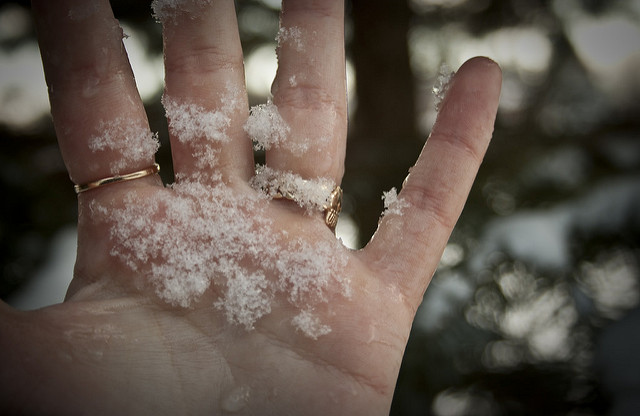Every year, about 1300 people die from the extreme cold in the United States. Currently, winter is upon us, and with that, comes the cold and frostbite, a condition in which anything from the skin down to the bone practically freezes from the to extreme cold and wind. Frostbite usually affects regions where blood flow is the lowest such as the ears or fingers. Even if your body parts are covered up with multiple layers of clothing, frostbite can still occur.
There are three stages of frostbite. First, your skin turns red and numb. This is frostnip, the start to permanent damage if not treated right away. Usually after 15 to 30 minutes, your skin will turn white and pale, a sign of superficial frostbite. You may feel stinging, swelling, or blisters as you attempt to warm your skin. Lastly, the third stage is severe frostbite, and this happens around one to two hours after extreme cold exposure. Its symptoms include loss of feeling, large blisters, and a blackening of dead skin tissue. However, the colder the temperature and wind chill, the more likely and quickly you are to develop frostbite.
Image Source: Zia Soleil
The causes of frostbite include exposure to cold weather and practically any other extremely cold object. In addition, wearing unprotective clothing and staying in the cold for too long can make you vulnerable. High risk of frostbite occurs when temperatures drop below 5 °F.
If you suspect that you might be getting frostbite, get out of the cold immediately and protect your exposed areas. You can warm yourself up by tucking your hands into your armpits or soaking affected areas in warm water. If the injury is more severe, you may need to take pain medication, antibiotics for infections, or have surgery to remove dead tissue. Prevention techniques include wearing mittens, windproof and waterproof clothing, and headwear to cover the ears. Staying hydrated, eating well, and avoiding smoking and alcohol can also increase blood circulation. Lastly, keep your body constantly moving to stay warm and enforce blood flow.
The bottom line is that if you’re in a really cold environment, cover up, stay hydrated, and find a warm place as soon as possible. Frostbite is reversible if you detect it fast enough, so stay alert when areas of your body are freezing.
Feature Image Source: Frostbitten by Alisha Vollkommer










